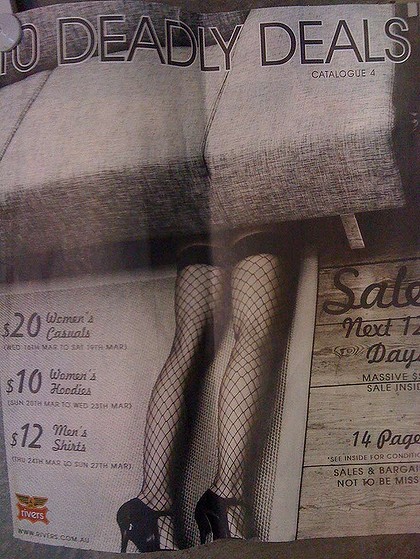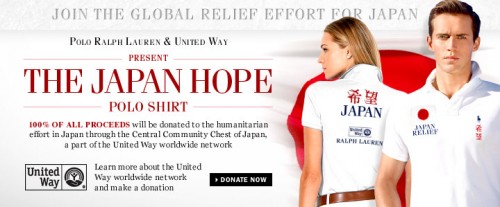Kelebek and Laurie L. both let us know about a recent example of the use of images of dead or brutalized women in fashion advertising. A recent catalog, titled “Deadly Deals,” from the Australian clothing chain Rivers, included this image (via The Age):
And way back in July of last year, Caroline submitted an article from Amazing Women Rock about an ad for Beymen Blender, an upscale clothing boutique in Istanbul. The ad shows a woman’s dismembered body hanging from meat hooks; it and the rest of the photos below may be triggering for those sensitive to images of violence toward people, so I’m putting it after the jump.
However, Dmitriy T.M., Melissa F., and Noelle S. found an example from the October 2010 issue of Interview magazine that inverts the usual gender pattern by showing a woman with brutalized men. The photo shoot was apparently supposed to evoke the types of torture and murder used by organized crime in Russia.
In this case, Naomi Campbell is shown in positions of dominance over an extremely pale-skinned, and clearly badly injured, man. So those images reverse not just the usual gender dynamic in images of violence and brutality in fashion photos, but also the frequent pattern of seeing naked or partially-naked Black bodies displayed as props around more fully-clothed White bodies (though Campbell is certainly scantily clad and sexualized). I suppose you could see this as undermining or commenting on the images we often see of violence toward women in fashion. Yet we could also argue that it does so by reinforcing the association of Blackness, in particular, with violence and aggression. And the photo shoot includes the same sexualization of violence seen so often in the fashion industry.
Thoughts?
Gwen Sharp is an associate professor of sociology at Nevada State College. You can follow her on Twitter at @gwensharpnv.






